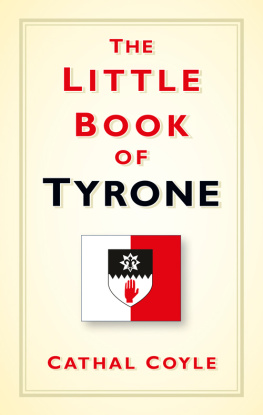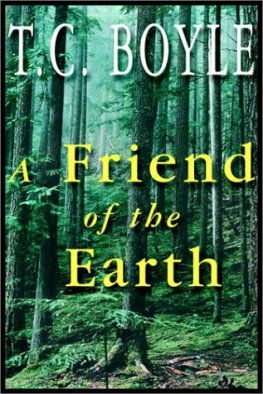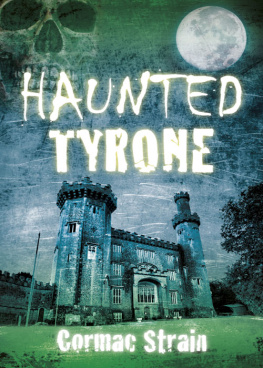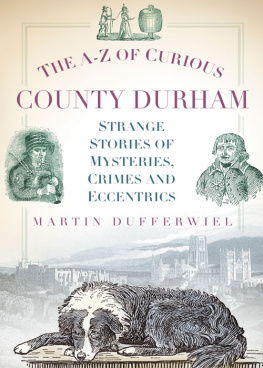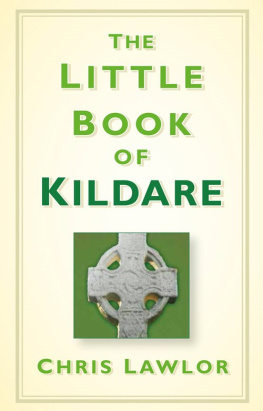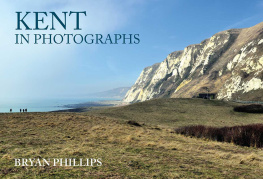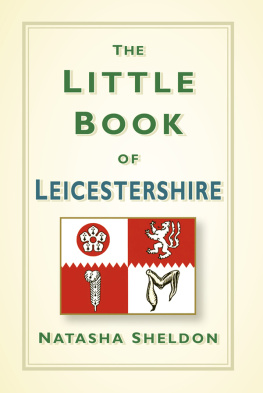
This book is dedicated to my mother, Olive
I have so many people to thank for helping towards the research and writing of this book. First of all I thank my wife Louise and my children, Caoimhe (who provided many of the drawings in this book), Dire (who helped with some of the research) and Ruair (for his helpful chats) for their love and support. I also must thank Beth Amphlett from The History Press who was kind enough to offer me this project after my initial suggestion.
My extended family have also been helpful and a big thanks to anyone who helped or offered advice in any way, including the Keightley Family for permission to use the photograph of Beaghmore Stone Circles.
Thanks to Ms Caroline Marshall for her permission to publish extracts of the following poems of W.F. Marshall from Livin in Drumlister at various parts of this book: Purple and Gold, Me an Me Da and The Fairy Hill. Thanks to Polly Devlin and The OBrien Press for their permission to publish an extract from The Far Side of the Lough in Chapter 4. Thanks to the Tyrone GAA County Board for their permission to use the official county crest in Chapter 7. Thanks to The Gallery Press for permission to use the poetry of John Montague in Chapters 4 and 8. Thanks to the Ulster History Circle for their permission to use the image of the W.F. Marshall plaque in Chapter 8.
Thanks to all of the following for their professional assistance: David Currie (Irish Football Association); Pat Grimes (Moortown); Marian Hilley (Omagh District Council); Christine Johnston (Migration Studies Library, Ulster American Folk Park); Willow Murray (Irish Rugby Football Union); Dominic McCaughey (Tyrone GAA); Christine McGowan (Hill of the ONeill and Ranfurly House Arts and Visitor Centre); Mary McKeown and Samus Mac Giolla Phdraig (Cookstown District Council); Anne ONeill (An Post); David Wishart (Dungannon Rugby Club).
CONTENTS
County Tyrone is part of the historic province of Ulster, and many significant arrivals and departures has helped to define its history. From the exit of famous clans during the Flight of the Earls episode to the recent influx of a vast array of nationalities from around the world, the county has developed into a shining example of twenty-first-century life in Ireland.
Indeed, Tyrone or Tr Eoghain Eoghans land is a diverse place in terms of its people and its landscape. The bustling towns of Dungannon and Cookstown in the south and Omagh and Strabane further north can be juxtaposed with the slower pace and tranquillity of the Glenelly Valley and small hamlets that are dotted around the county. It is a fine example of how the Planter and the Gael has co-existed since the times of the Plantation while in more recent times the newcomers from other European regions (and often further afield) who have decided that Tyrone offers them the opportunities that other places cannot.
Perhaps the irony about this new demographic is that Tyrone has historically been a county of emigration particularly to North America and Australasia as people sought better opportunities when times were economically difficult in their native land. This has been recognised by the building of the magnificent Ulster American Folk Park that is situated between Omagh and Newtownstewart, which pays homage to the Diaspora of Tyrone and other Irish counties.
For those fortunate enough to have stayed in the ONeill County, as it is often termed, the castles, lakes, mountains and forests are among the most beautiful and enchanting in the whole of Ireland.
One such attraction is Favour Royal Forest in Augher. It contains St Patricks Chair and Well, symbolising the patron saints close connection to Tyrone. Indeed, St Patrick is a popular title of many churches, sporting organisations and schools throughout the county.
The natural beauty of Tyrone is enhanced by the warmth and friendliness of its people. While there have been difficult times due to economic reasons and during the Troubles of the twentieth century, Tyrone people are proud, resilient and talented. These key attributes have often translated into success on the international stage, whether it be the remarkable achievements of General James Shields from Altmore near Galbally, who became a senator in the United States Congress; or Elizabeth Noble from Dungannon, who became known as Sister Nivedita, a highly influential educationalist in India.
The county town of Omagh is a central location in Tyrone for sporting and cultural events, while further west the towns of Castlederg, Dromore and Trillick have also been noted for their musical and literary contributions down the years. The literary aspect to Tyrone life has been renowned since the days of William Carleton in the nineteenth century, and his famous aptitude for writing about the people and places of Tyrone, Ulster and Ireland has been carried on by respected writers such as Benedict Kiely and Brian ONolan.
The esteemed talents of musicians such as Paul Brady and Philomena Begley have also been internationally recognised, with their fabulous longevity and success both at home and in many other countries a tribute to their Tyrone roots.
In sporting terms, Tyrone individuals have achieved wonderful accolades and trophies: world titles in snooker, major titles in golf, along with success in team sports such as rugby, soccer and Gaelic games where Tyrone teams have made their mark on the highest stage. The inaugural All-Ireland Senior Gaelic football success for Tyrone in 2003 was almost a century in the making, but it was celebrated raucously. The legacy of this victory shouldnt be underestimated, as it planted a seed that will inspire future generations.
Tyrone has had its own often unique or indeed peculiar superstitions; for example, it was considered unlucky to be the first house to show smoke on a May morning, with the cattle being milked and the byre swept clean before the fire was lit. One cure worth mentioning is for deafness; that is to anoint an ear with the oil of eels!
Tyrone may be rapidly changing in a demographic sense but the natural beauty hasnt changed despite the passing of millennia Beaghmore Stone Circles being a fine example. This group of Neolithic stones is a strong symbol that the past in Tyrone is often inescapable and that our shared heritage and culture in the ONeill County is to be cherished and treasured. Hopefully this book will remind us all of that.

Far away I hear you calling,
Motherland! Still dear to me;
When the autumn leaves are falling
Ill be back across the sea,
Tramping through the mist that gathers
Down from Sperrins summits lone
To the homestead of my fathers
On the uplands of Tyrone.
W.F. Marshall The Bard of Tyrone, Purple and Gold
A POTTED HISTORY
OF TYRONE
County Tyrone covers an area that is geographically and historically part of the Irish province of Ulster.
Tyrone gets its name from the Irish Tr Eoghain , meaning Eoghan's land, after the ancient division of north-west Ireland between the two sons of Niall No giallach , or Niall of the Nine Hostages, Conall and Eoghan. Most of what is now Donegal became Tr Conaill , or Conalls land, while the remainder went to Eoghan during the fifth century AD , who founded the kingdom of Aileach, later known as Tr Eoghain .
Before it became known as an Irish county, this area of Tr Eoghain referred to the large territory where Eoghans descendant Hugh ONeill exerted his authority an area which included a large swathe of the present counties of Tyrone and Derry. The ONeills ruled for hundreds of years and the influence that this dynasty had can still be seen today in villages and towns across the county; their stronghold, Dungannon, has been one of the most strategically important sites throughout the history of Ireland.
Next page
